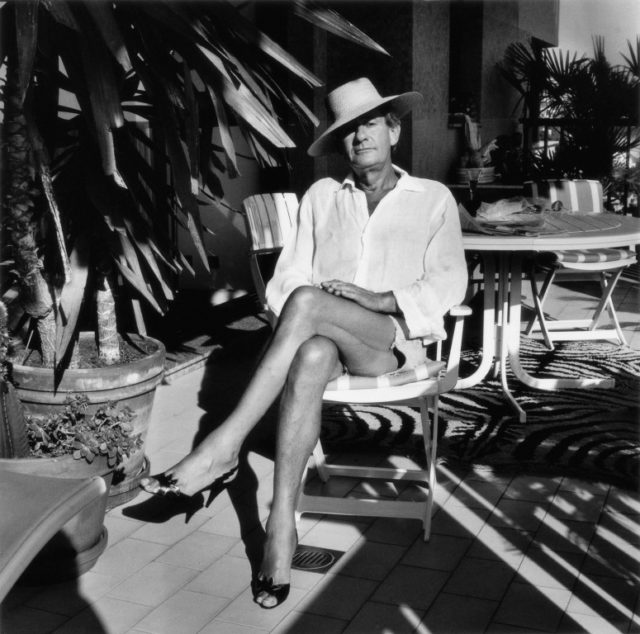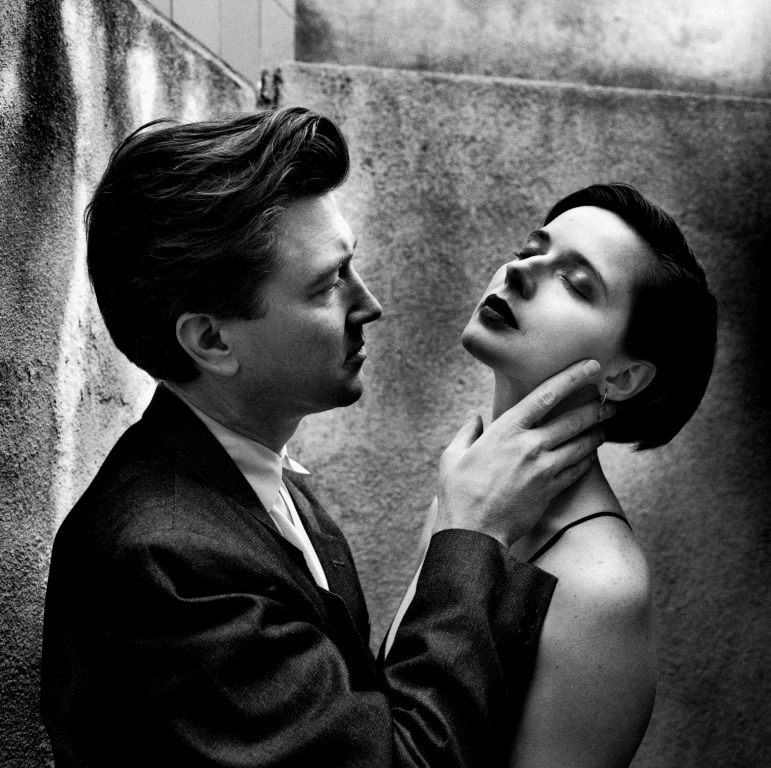
Helmut Newton had a sense of humor. That might not be your immediate takeaway if you do a Google search for his photographs (after you deactivate all the safe search controls). But the more you peruse his oeuvre, the more his wit becomes obvious. The more you see the naughty little schoolboy behind the camera.
Take his 1994 photograph, “Roast chicken and Bulgari jewels.” The composition is simple: One roasted chicken, its hips splayed, its cavity open wide. The hands of the model grasp the breast phallically with one hand, wrestling the leg with another. On her wrist and finger, oversized jewelry costing more than most chefs make in a year. Next to her hands and the cooked corpse, a soiled Wusthof Classic Chef Knife. It’s violent and sexual, domestic and opulent all in one photograph.

“Roast chicken and Bulgari jewel” is also one of Newton’s more erotic photographs, and that’s saying something considering the man’s métier was naked women. And they are on full display in Helmut Newton: The Bad and the Beautiful.
Directed by Gero von Boehm, The Bad and the Beautiful is your typical documentary hagiography, but with a little sex. Running just under 90 minutes, the first half of Bad and the Beautiful focuses primarily on Newton’s work with von Boehm, peppering Newton’s photographs and contact sheets with a running commentary from former models — Nadja Auermann, Isabella Rossellini, Grace Jones, Charlotte Rampling, etc. The focus here is on Newton’s use of nudes to convey power through eroticism. Some of it was perverted, all of it was provocative, but none of it was intentionally vulgar.
But was it feminist, or was it misogynistic? Most of the interviewees insist Newton’s photography placed women in the role of sexual dominance. His framing and composition gave them power. Critic Susan Sontag focused on the subject and sees misogynistic adoration. There is love in the photos, but love the way a “master loves his slave” or “an executioner loves his victims.” Auermann concurs but remains on Newton’s side. Art is a mirror reflecting society. If society is sexist and misogynistic, why shouldn’t photography reflect that?

But Newton wasn’t just reflecting the world of high fashion and consumerism; he was drawing on the artistic wonders of Weimar Era German. Growing up a Jewish boy in a Berlin between world wars, Newton was influenced by German Expressionism and the glorification of the human figure à la Nazi-filmmaker Leni Riefenstahl. You can see both in Newton’s photographs, from his black and white portraits riddled with sharp shadows to human forms so taut and tight, Greek gods would envy them. They are works of attraction, and works of repulsion.
The second part of Bad and the Beautiful recounts Newton’s life and marriage in archival interviews filmed before the photographer’s death in 2004. They don’t add as much to the narrative as von Boehm might hope, but they don’t bog the doc down too much either. The draw here is the photographs, and though they are only a few decades old, they still seem like they’re beamed from another time and place.
ON THE BILL: Helmut Newton: The Bad and the Beautiful is available at virtual theaters, full list at kinomarquee.com, starting
July 24.














